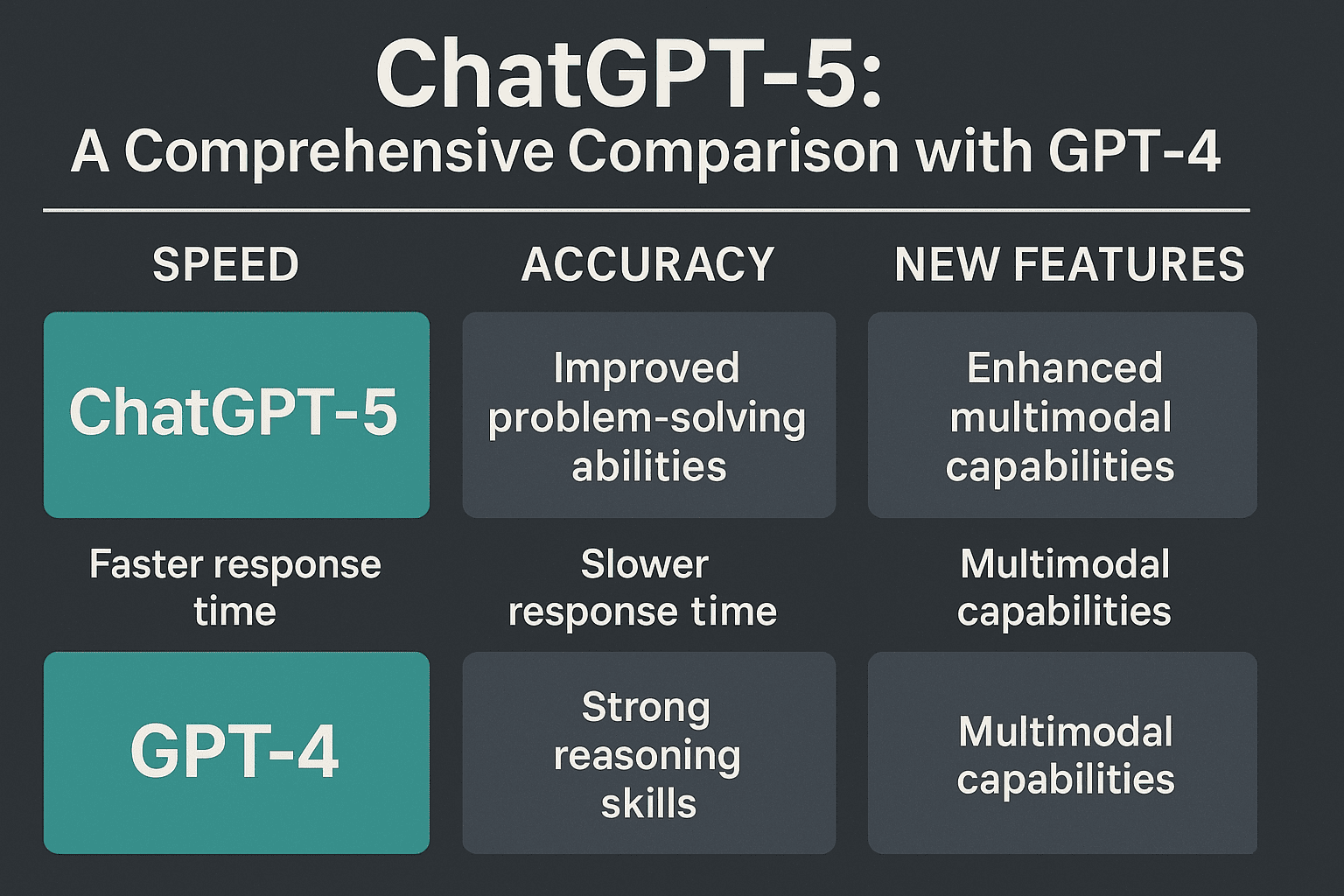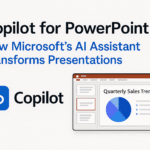ChatGPT‑5: A Comprehensive Comparison with GPT‑4 + Speed, Accuracy & New Features

Introduction — The AI Leap of 2025
In August 2025, OpenAI unveiled ChatGPT-5, the latest in its groundbreaking series of generative AI models. It wasn’t just a minor upgrade from GPT-4—it was a re-engineering of how AI works. From real-time model routing to expanded multimodal capabilities, GPT-5 represents a new era in AI assistance.
Over the past seven years, OpenAI has taken the world from the first GPT prototype to a model capable of long-context reasoning, dynamic tool use, and near-human adaptability. GPT-5 builds upon GPT-4’s strengths while addressing its weaknesses: speed bottlenecks, hallucination rates, and lack of flexibility.
This guide dives deep into every aspect of GPT-5, from architecture to benchmarks, from developer tools to business use cases, so you can decide exactly how it fits into your workflow.
1. The Evolution from GPT-4 to GPT-5
To appreciate GPT-5’s innovations, you have to look back.
| Model | Year | Notable Improvements |
|---|---|---|
| GPT-1 | 2018 | 117M parameters, concept proof. |
| GPT-2 | 2019 | 1.5B parameters, coherent long-form text. |
| GPT-3 | 2020 | 175B parameters, became core of ChatGPT. |
| GPT-3.5 | 2022 | Optimized GPT-3, better instruction following. |
| GPT-4 | 2023 | Multimodal input, reasoning boost, safer outputs. |
| GPT-4o | 2024 | Real-time interaction, faster responses. |
| GPT-5 | 2025 | Router architecture, personalities, bigger context, multimodal accuracy. |
Key takeaway: GPT-5 isn’t just a larger model—it’s a smarter system that adapts to your request in real time.
2. The GPT-5 Architecture Explained
One of the biggest technical leaps is GPT-5’s Real-Time Model Router.
2.1 Automatic Model Selection
Instead of manually switching between models, GPT-5 automatically decides:
Main → High-accuracy, deep reasoning
Mini → Fast, lightweight, cost-efficient
Nano → Ultra-low latency for embedded or offline-like tasks
This means optimal performance without micromanaging settings.
2.2 Expanded Token Capacity
Input: 272,000 tokens
Output: 128,000 tokens
You can feed GPT-5 entire books, massive datasets, or large codebases in a single prompt without losing context.
2.3 Multimodal Core
GPT-5 processes text, images, tables, and vision data seamlessly, enabling cross-modal reasoning—for example, analyzing an image and writing Python code to recreate it.
3. GPT-5’s New Features
3.1 Personalities
Four built-in interaction styles:
Cynic: Witty, skeptical responses
Robot: Straightforward and precise
Nerd: Detailed, enthusiastic explanations
Listener: Empathetic and conversational
These styles adapt writing tone, sentence complexity, and response flow.
3.2 Hallucination Reduction
GPT-5 reduces factual errors by:
Cross-checking with training references
Adding “uncertainty disclaimers” when unsure
Maintaining thread accuracy over longer chats
3.3 Coding Superiority
Scores:
74.9% on SWE-bench Verified
88% on Aider Polyglot benchmark
This translates to fewer bugs, clearer comments, and better API integration.
4. Speed & Performance
4.1 Benchmarks
| Model | Avg. Latency | Hallucination Rate | Best Use Case |
|---|---|---|---|
| GPT-4o | 1.2s | ~12% | Real-time chat |
| GPT-5 Mini | 0.9s | ~9% | FAQs, coding snippets |
| GPT-5 Main | 1.4s | ~8% | Deep analysis |
4.2 Real-World Observations
GPT-5-Mini outpaces GPT-4o for short queries
GPT-5-Main may start slower, but finishes complex tasks faster due to fewer clarifications
5. GPT-5 vs GPT-4 — The Complete Comparison
| Feature | GPT-4 | GPT-5 |
|---|---|---|
| Model Router | ❌ | ✅ Automatic selection |
| Context Window | 128K max | 272K max |
| Personalities | ❌ | ✅ 4 styles |
| Coding Accuracy | 68% | 75–88% |
| Image Analysis | Good | Excellent |
| Hallucination Rate | Higher | Lower |
| Speed Modes | Manual | Auto-optimized |
Verdict: GPT-5 wins in flexibility, reliability, and speed-to-accuracy ratio.
6. GPT-5 for Developers
API Upgrades: Better function calling, structured output
Code Assistance: Multi-language debugging and documentation generation
Tool Integration: Works smoothly with databases, APIs, and no-code tools
Project Management: Can break down large software tasks into actionable tickets
7. GPT-5 for Businesses
Customer Support: Multilingual, empathetic, context-aware helpdesk bots
Content Creation: SEO blogs, ad copy, video scripts
Data Insights: Analyze spreadsheets, dashboards, and generate reports
Automation: Trigger workflows in CRMs, ERP systems
8. Safety, Ethics, and Reliability
OpenAI improved GPT-5’s safety filter to avoid:
Dangerous recommendations
Misinformation spread
Privacy breaches
Yet, it remains transparent—users can request source citations and confidence levels.
9. Criticisms & Limitations
Some users report slower GPT-5-Main on trivial tasks
Occasional over-refusal for sensitive queries
GPT-4o still preferred for pure speed chats
10. The Future Beyond GPT-5
OpenAI hints at:
GPT-5.5 / GPT-6 → Even larger context, more real-time capabilities
Full multimodal API → Unified text, audio, video, 3D models
Agent Mode → Autonomous multi-step task completion
Conclusion
GPT-5 is not just “GPT-4 but better”—it’s a smarter, more adaptable AI designed to fit a wider range of use cases. For developers, businesses, and everyday users, it offers:
More speed options
Fewer hallucinations
Better coding
Flexible personalities
With the right prompts and integrations, GPT-5 can become the most reliable AI partner you’ve ever worked with.
External Links for Reference:








